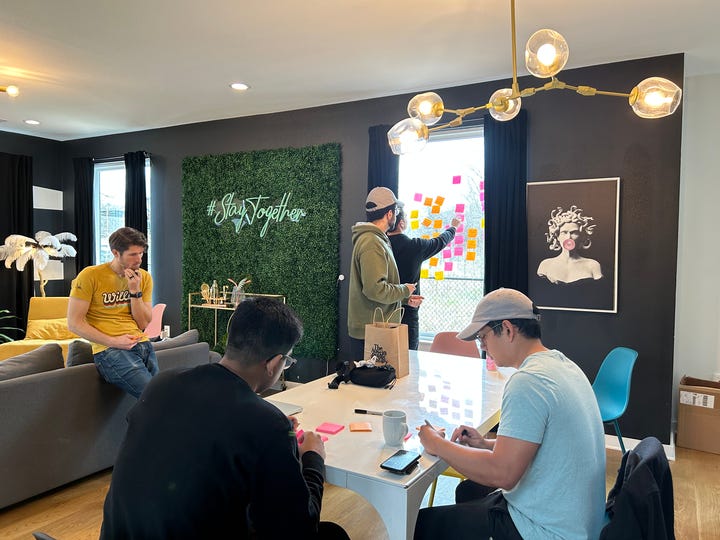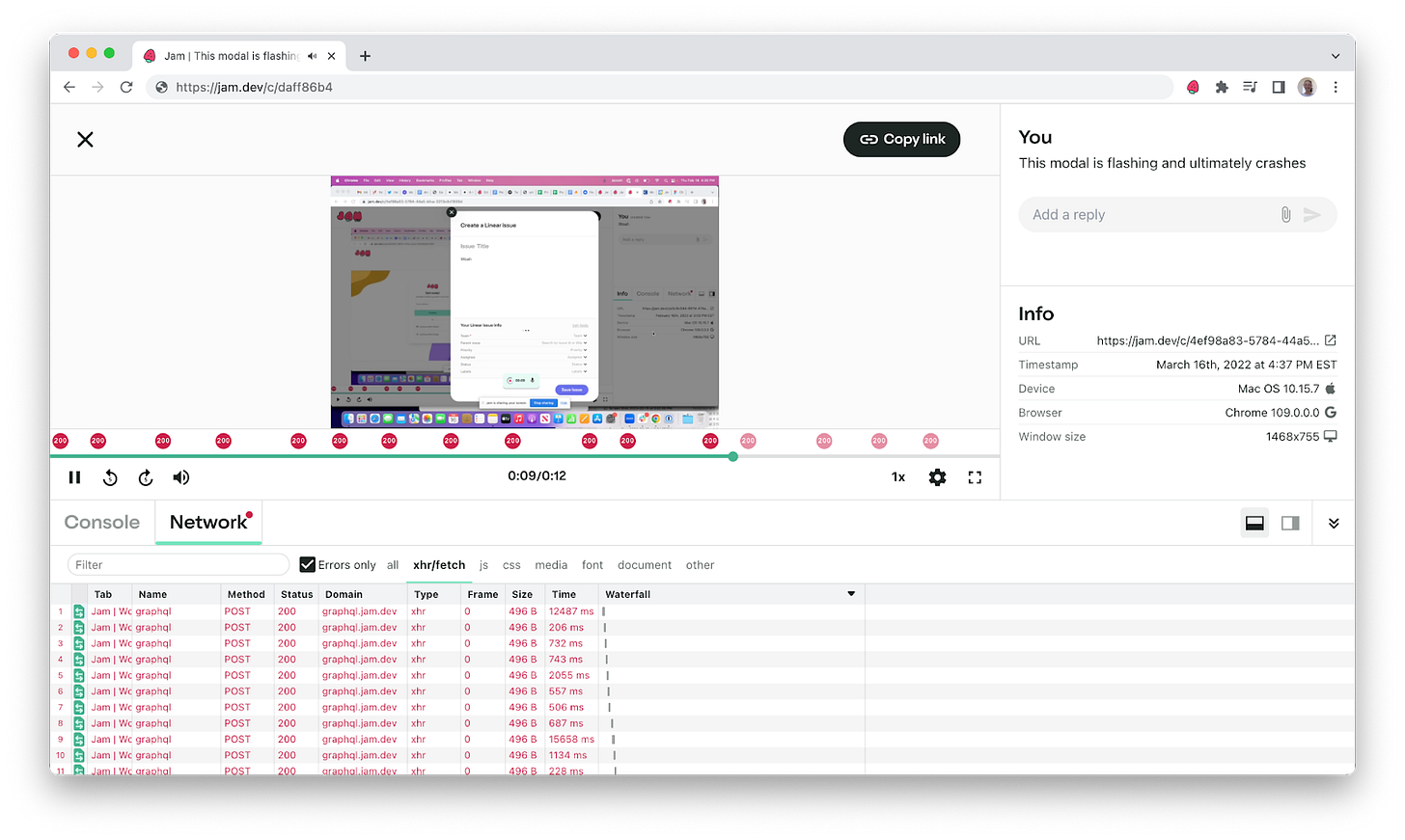Bug reporting hasn't changed since the 1990's
As we are nearing a major milestone of 15,000 users, I wanted to thank you all and share a little more about our journey.
It's 2023, and most teams still collaborate on bug fixes the way they did in the 90's.
Have you ever experienced this scenario? An engineer receives a ticket, but can't reproduce the bug because they lack sufficient information. They leave a comment and switch to a different task. When new information arrives, they have to remember where they left off – a painful context switch.
While software development has improved 100x since the internet was invented, how people report bugs is a relic of the past and it’s time to change that.
Time for change
That's why a year ago, a few of us started imagining a better way. What if we could build a new tool that would make unclear bug reports a thing of the past, eliminate the need for back-and-forths, and save engineers' valuable time and energy?
And so, the idea for Jam was born. A tool designed to make the bug reporting process more productive and efficient. We wanted to create a solution that would help engineers focus on technical bugs, not communication problems.

So, we set out to build a tool that would enable anyone, no matter their technical background, to capture rich contextual technical data about bugs, so that engineers could quickly identify and resolve issues. We wanted to create a tool that would make engineers' lives easier, while also helping the people who report issues be more effective too.
As we developed and tested Jam early last year, we saw the potential it had to speed up the way our own team works.
For example – take this Jam of a bug in our own code. Instead of needing to hop on a call to debug live, our engineers could see what the issue was, right from the bug report itself.

We began to share Jam with other engineering teams, and we were really excited by the response.
Ramp, T-Mobile, and Dell were among the early adopters of Jam and provided invaluable feedback that helped us shape the product. Iterating on their input, we're now proud to say Jam has over 14,000 users and counting.
But our work is far from done. We know that the bug reporting process can be a major source of frustration and slowdowns for engineers, and we're committed to keep building Jam until we can change that industry-wide.
Reduce time on bugs, deliver the future faster to your users
At Jam, we understand the importance of a better bug reporting process.
Software today runs everything, from AI to hospitals and schools. The world now moves at the speed of software, and progress is happening at the speed of software development. Being able to deliver software faster is crucial, because that’s the speed that people’s experiences can improve.
I feel incredibly lucky to get to spend time with the amazing people in the Jam community. Behind every Jam user is a team working to push the world forward, and it's an honor that Jam is the tool they've chosen to help them do that faster. It's inspiring to see the impact that Jam is having, from helping hospital development teams catch and fix issues faster, to improving in-classroom learning software for special education.
Thank you for your continued support and for being part of our journey to enable a faster time to deliver the future to end users. If you’d like to share your feedback or thoughts about how we can enable a more productive future for engineering, you can reach out to me personally at dani@jam.dev.
Sincerely,
Dani Grant
